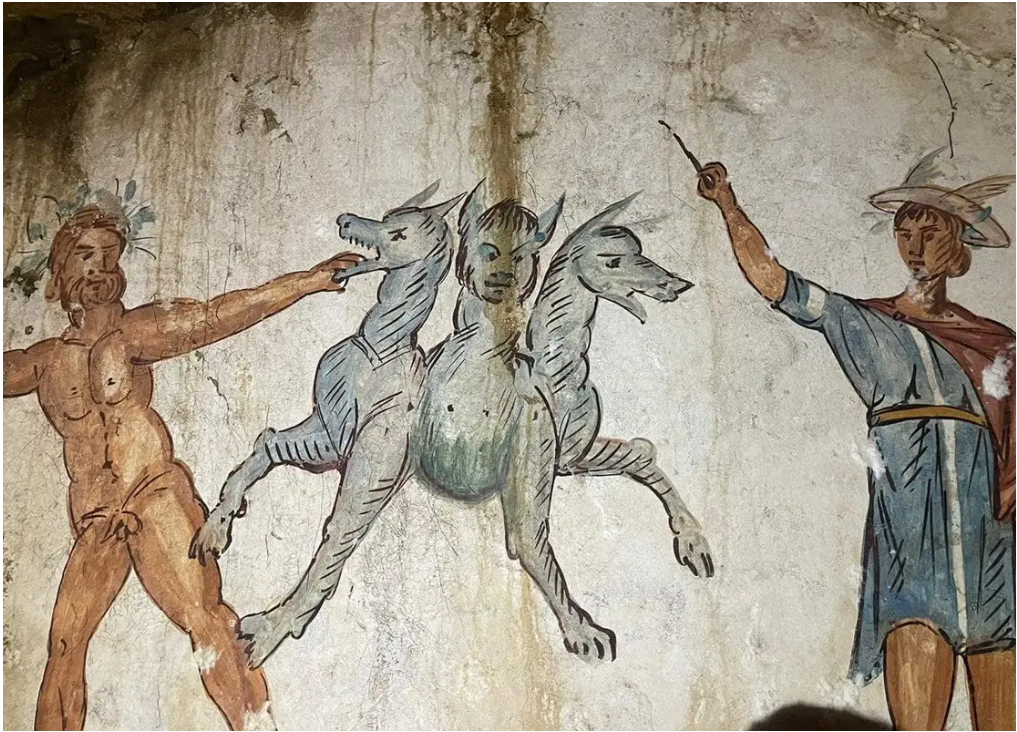Above image(s) credit: Mariano Nuzzo, the Superintendent of Archaeology, Fine Arts and Landscape for the Naples metropolitan area.
NEWS: Ancient Greco-Roman tomb labelled ‘Tomb of Cerberus’ discovered in Giugliano in Campania
An archaeological survey on an area of farmland within the municipality of Giugliano in Campania near Naples has uncovered a very well-preserved ancient tomb. Perhaps the most striking discoveries in the tomb are the beautiful frescoes adorning the walls and ceiling that have remained in remarkable condition, given their age (early examinations have deduced the tomb is around 2,000 years old). One of the frescoes depicts the 12th labour of Hercules (or Heracles) which saw him have to tame and capture Cerberus. Cerberus was the three-headed hound of Hades who guarded the gates of the underworld to prevent the dead from escaping. This striking fresco has led to the newly-found tomb being nicknamed ‘Tomb of Cerberus.’ Another of its frescoes depicts two ichthyocentaurs (sea-centaurs) each being attended by an erote (Cupid-like cherubim) while the centaurs hold up a Greek hoplite’s clipeus (shield).
Mariano Nuzzo - the Superintendent of Archaeology, Fine Arts and Landscape for the Naples metropolitan area - stated:
‘The tomb has frescoed ceilings and walls in perfect condition, with mythological scenes that go all around the room and figurative representations among which, a three-headed dog stands out.’
Speaking about some of the other amazing finds inside the tomb, he continued:
‘Three painted klìnai (a couch-like piece of furniture used in Greek symposia), an altar with vessels for libations, the deceased still placed on the funeral beds with rich objects – complete the picture of a discovery which, in this area, is unprecedented.’
Naples (Neapolis in the ancient period) was a Greek city-state founded on the Italian coast, part of a group of city-states that came to be referred to as Magna Graecia or ‘Greater Greece.’ These Greek colonies grew in wealth and power as the centuries went on - Syracuse in Sicily being a prime example of this. Even as the balance of power on the Italian mainland shifted and Rome became the dominant force, Neapolis remained a bastion of Hellenistic culture. It became a popular resort for the Roman wealthy, from emperors, who were often enamoured by Hellenistic culture, to writers like Virgil, the author of the Aeneid.
There have been an exceptionally high number of tombs found in the area around Naples with dates ranging throughout the Republican and Imperial era of the Roman empire’s history. With continued work being done, let’s hope that more ancient wonders are brought to light.
11/10/23



